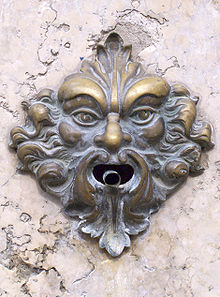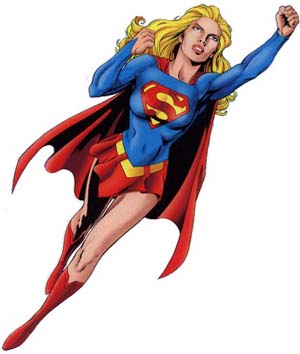
Earliest datings of this type of design put them in the 2ndC, where they are never found in churches but on memorial monuments to rich citizens in places like Trier. These monuments were not Christian tombs, but by the 4thC they were making an appearance on these, too. There is an example of one of these in Poitiers. It was not until the 6thC that the Green Man found his way into a place of Christian worship. This was again in Trier, where Bishop Nicetius took some of these carvings from the ruin of a nearby Roman temple and built them into a new pair of pillars in his cathedral. For 500 years these carvings of the Green Man occupied a very prominent place until blocked up behind brick during restoration work in the 11thC. And during that time the motif became much more widely known and used in church decoration.
In most churches now it is unusual to find a Green Man placed prominently, but examples do exist. In Kinnersley church (Herefordshire) the carved wooden screen on the altar has a Green Man at the very centre. But usually he'll be found disguised as a roof-boss, hidden in a corner, or lurking under a misericord seat.
It is known that stonemasons drew on many pagan themes for their decorations but we have few pointers as to the meaning behind this particular figure. Sometimes a Green Man carving is given a particular title- Silvanus (god of the forest) at the Abbey of Saint Denis, France; and Okeanus (both god of the sea and a satyr) in Mundanya, Istanbul.

This has led many to seek clues in myth, legend and religion. John Barleycorn - celebrated in song - shows the same themes of death and rebirth, as does the Green Knight in the Arthurian story of Sir Gawain. Medieval legends of the Wild Men - dressed in leaves, living in the forest and venturing forth to take food, have been connected with the Green Man. In some stories of Robin Hood - the robber and hero dressed in green - he attains godlike status and links with the Horned God Herne. Present-day Western pagan thought identifies the Green Man as the symbol of the qualities of godhood within the male, as well as being an expression of the cycle of life/death/rebirth and its relationship with the transcendent life-force, the Goddess, the female expression of divinity.
His re-adoption by some present-day morris sides as the Fool reflects the seasonal nature of the morris, its roots in fertility celebrations, and the nature of its maleness.
So, who is the Green Man?
The answer to this riddle is certainly not straightforward.....
Some theologians like Rabanus Maurus (8thC) said they represented the sins of the flesh - lustful and wicked men doomed to eternal damnation. This seems to be a long way from the meaning they must have held for those who used them on the memorials to their dear departed six centuries previously: In fact, they continued to be used as tomb carvings long after the church masons stopped using them inside their buildings.
This link with death has led some to describe the Green Man as the symbol of the natural cycle of mortal life- birth, life, death, decay. To Christians, it is this cycle that the soul can overcome with Faith. To some others the cycle continues - from decay back to the soil, to food from the soil, back into life - a symbol of the continuous regeneration of life and the interdependence of all things.
Another direction we can take when looking for the meaning behind the Green Man is to study the character known in England as 'Jack-in-the- Green'. This was a figure who joined the May-Day revels in the 19thC, becoming particular!y associated with the chimney sweeps who along with many other trades, used this national holiday as an opportunity to boost their lean income with a little begging. In return, they provided some entertainment of rowdy variety. This involved them dressing up in gaudy tinsels and ribbons, with blackened faces "like morris dancers" and performing a rough and ready dance around a Jack-in-the-Green to the music of shovels, sticks, drums, and whistles. The Jack was a man inside a conical framework of wicker covered with leaves. A small gap was left in this, through which the occupant could peer- very like some of the Green Man figures in the churches.
The Jack had to be built by the sweeps. If any rival group of tradesmen appeared with one, a bloody fight often ensued. There were many complaints of the rowdy and drunken behaviour on May-Day, which my have been one factor in its eventual decline.
At the turn of the century, however, he was rescued from these unseemly and common clutches to become the leading figure in many May Pageants organised by middle-class revivalists. Their pageants looked back to a distant "Merrie England", wholesome and pure, where everyone knew their place and was happy with their lot. Many "folk" activities were taken up with interest at this time, and many were in fact saved from decline. One such was the morris-dance.
One of the few pieces of documentary evidence we have of the existence of the Jack-in-the-Green outside these 19thC sweeps' revels links him firmly with the morris. An account of Sir Humphrey Gilbert's third voyage to North America in 1583 includes a description of the "entertainments taken across the ocean for the solace of our people and allurement of the Savages". It goes on to describe the "cavortings of the morris dancers, hobby horse, and jack o' greens", which apparently went down well with the audiences.
Whatever he was before he met the sweeps, and wherever he came from, he ended up as a symbol of the May - the traditional beginning of the Spring. This symbol of regeneration as part of the life-cycle again bring us back to the ideas behind the Green Man in church-carvings. While we cannot prove a direct historical connection between the carvings and the pageant-figure, it is apparent that they are connected. That the Jack-in-the-Green is more directly associated with the celebration of the life-force is argued in Sir James Frazer's massive work, The Golden Bough. He described the Jack as our own version of the typical leaf-clad mummer found throughout Europe. Though in England his history and meaning are unknown (no-one ever asked the sweeps!) similar figures in other parts of were certainly explained by their celebrants as being representations of the spirit or god of the yearly renewal of life.
Whilst the study of architecture, folklore and anthropology can give us a clue to the Green Man's nature he has also inspired a more poetic approach to the nature of his mystery...
A Riddle
I am born on May Morning - by sticks, bells, and ribbons I am the sap - in the dark root
I am the dancer - with his six fools
I am the tump - behind the old church
I am the lost soul - under the misericord
I am the oak - against the stars
I am the face - that peers through the leaves
I am the fear - in a child' s mind
I am the demon - on the roof-boss
I am killed in October - and laid on church altars
I am the guiser - on the bright bonfire
I am the old grain - sown with the seed
I am the flame - in the pumpkin ' s grin
I am the spirit - in the kern-baby's bosom



 (let's pretend she's not posing with her hands on her hips...)
(let's pretend she's not posing with her hands on her hips...)